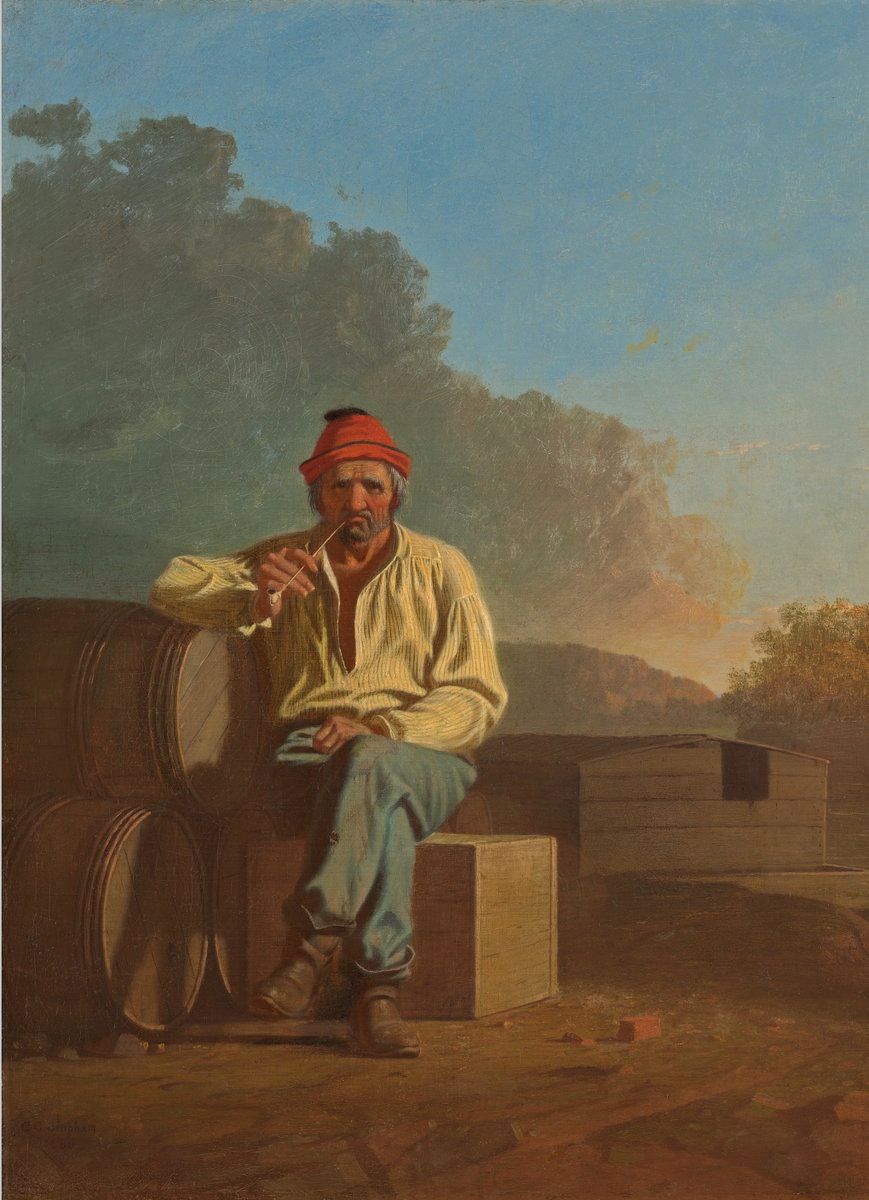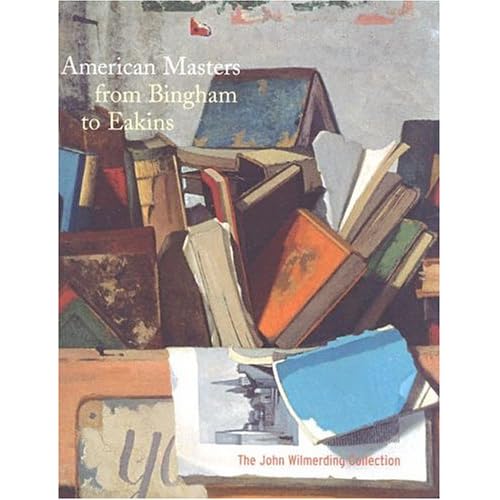American Masters from Bingham to Eakins: The John Wilmerding Collection showcasing one of the most important private collections of 19th-century American art, an exhibition of 51 paintings by 26 American artists was on view at the National Gallery of Art's East Building, May 9, 2004 through February 6, 2005. Works by such masters as George Caleb Bingham, Frederic Edwin Church, Thomas Eakins, William Stanley Haseltine, Martin Johnson Heade, Fitz Hugh Lane, John Marin, John F. Peto, and William Trost Richards represented four decades of collecting.
The works in the exhibition reveal a variety of American art such as landscapes, marine painting, portraits, genre scenes, still lifes, and figure paintings, including a group of drawings and watercolors of the scenery of Mount Desert Island, Maine, by artists--among them Haseltine, Lane, Marin, and Richards--who worked there from the 1840s until the early 20th century.

Highlights from the collection include Fitz Hugh Lane's Western Shore of Gloucester, Outer Harbor (c. 1857), a radiant view of sailing vessels on calm water that is particularly notable for its superb state of preservation.

Another notable work is one of George Caleb Bingham's rare genre pictures, Mississippi Boatman (1850), which depicts a rugged-looking man guarding cargo on the riverside.
In addition to the paintings by Lane and Bingham, there are superb examples by Martin Johnson Heade, Frederic Edwin Church, John F. Peto, and Thomas Eakins,

such as Heade's Sunlight and Shadow: The Newbury Marshes (c. 1871-1875)

and Still Life with Roses, Lilies, and Forget-Me-Nots in a Glass Vase (1869),

Church's Newport Mountain, Mount Desert (1851),

Peto's Take Your Choice, (1885), and

Eakins' Portrait of Dr. William Thomson (c. 1907)
and watercolor Drifting (1875).
JOHN WILMERDING
In his more than 40 years as a scholar and teacher of American art, John Wilmerding has also been a collector. He comes from a family with a rich history of collecting art. Wilmerding's great-grandparents, Henry Osborne Havemeyer and his second wife, Louisine Waldron Havemeyer, amassed an extraordinary group of European and Oriental works of art that was eventually bequeathed to the Metropolitan Museum of Art in New York.
One of the Havemeyers' daughters, Electra Havemeyer Webb (Wilmerding's grandmother), was an eclectic acquirer of American fine and folk paintings and sculptures, decorative arts, quilts, tools, vernacular objects, toys, buildings, and transportation vehicles. Her remarkable and vast collection was the genesis of the Shelburne Museum in Vermont.
Wilmerding acquired his first work of art, American marine painter Fitz Hugh Lane's Western Shore of Gloucester, Outer Harbor (c. 1857), in 1960. At the time Wilmerding was writing his senior honors thesis on the artist at Harvard University, having become interested in Lane's work from his own avid love of sailing. The painting by Lane remained the only painting owned until 1965, when he acquired Bingham's Mississippi Boatman. Following completion of his doctorate in art history, Wilmerding began teaching at Dartmouth College and started to collect more seriously. Wilmerding went on to work at the National Gallery of Art, first as curator of American art and senior curator, and then as deputy director. He returned to full-time teaching in 1988 as the Christopher Binyon Sarofim Professor of American Art at Princeton University. While at the National Gallery of Art, Wilmerding organized the 1980 landmark exhibition, American Light: The Luminist Movement, which included artists such as Church, Sanford Gifford, Heade, John F. Kensett, and Lane.
The exhibition curator was Franklin Kelly, senior curator of American and British paintings, National Gallery of Art.

Published by the National Gallery of Art, Washington, in association with Lund Humphries, and available in April 2004, American Masters from Bingham to Eakins: The John Wilmerding Collection (168 pages, 63 color and 66 black-and-white illustrations)includes an essay based on an interview between Kelly and Wilmerding, as well as entries by Nancy K. Anderson, Charles M. Brock, Deborah Chotner, and Abbie N. Sprague.